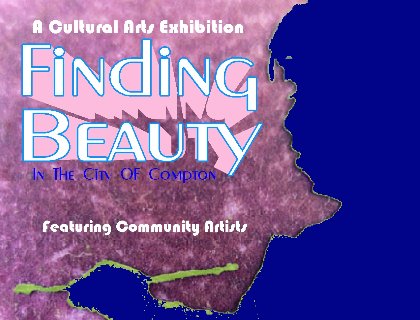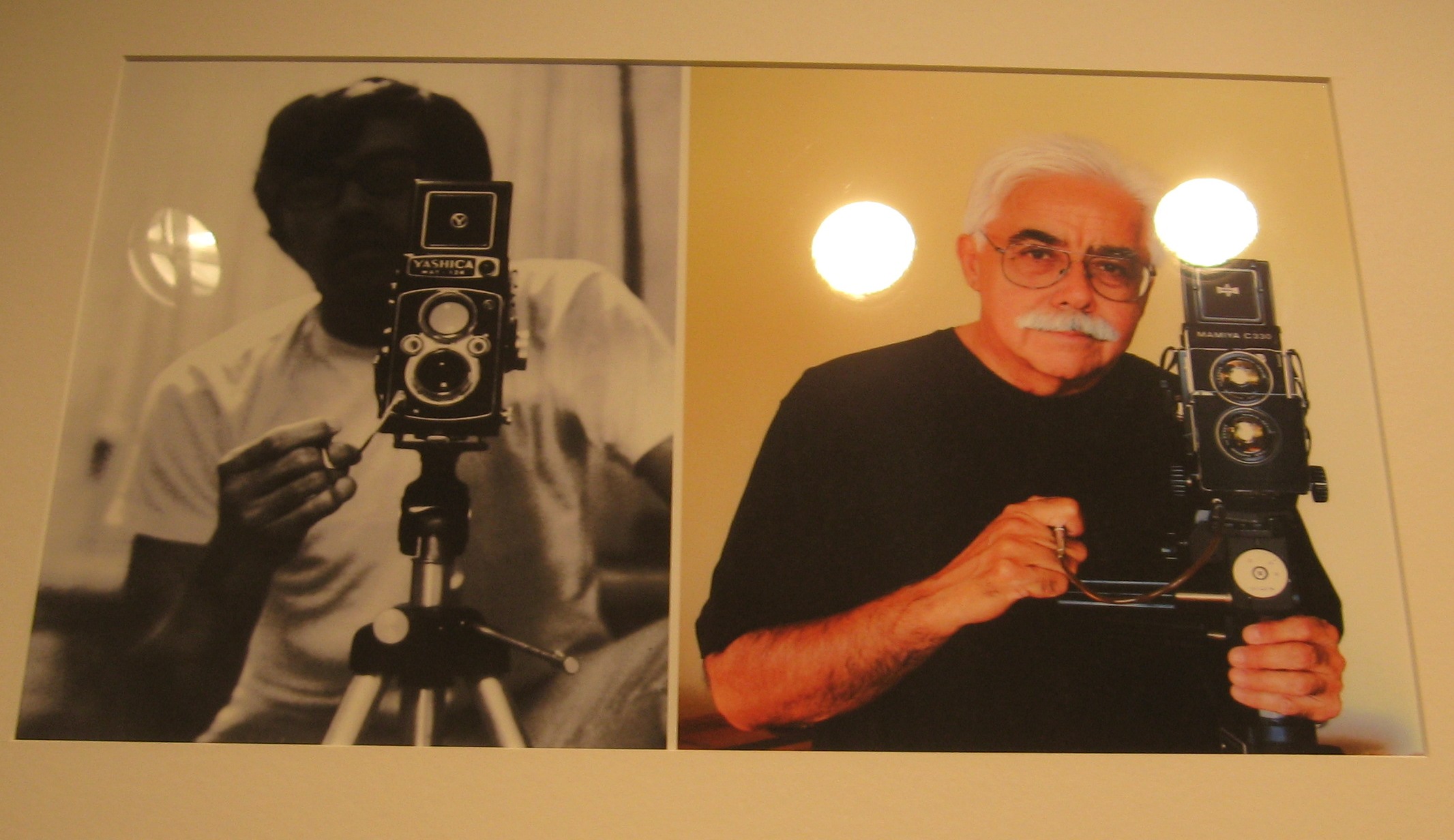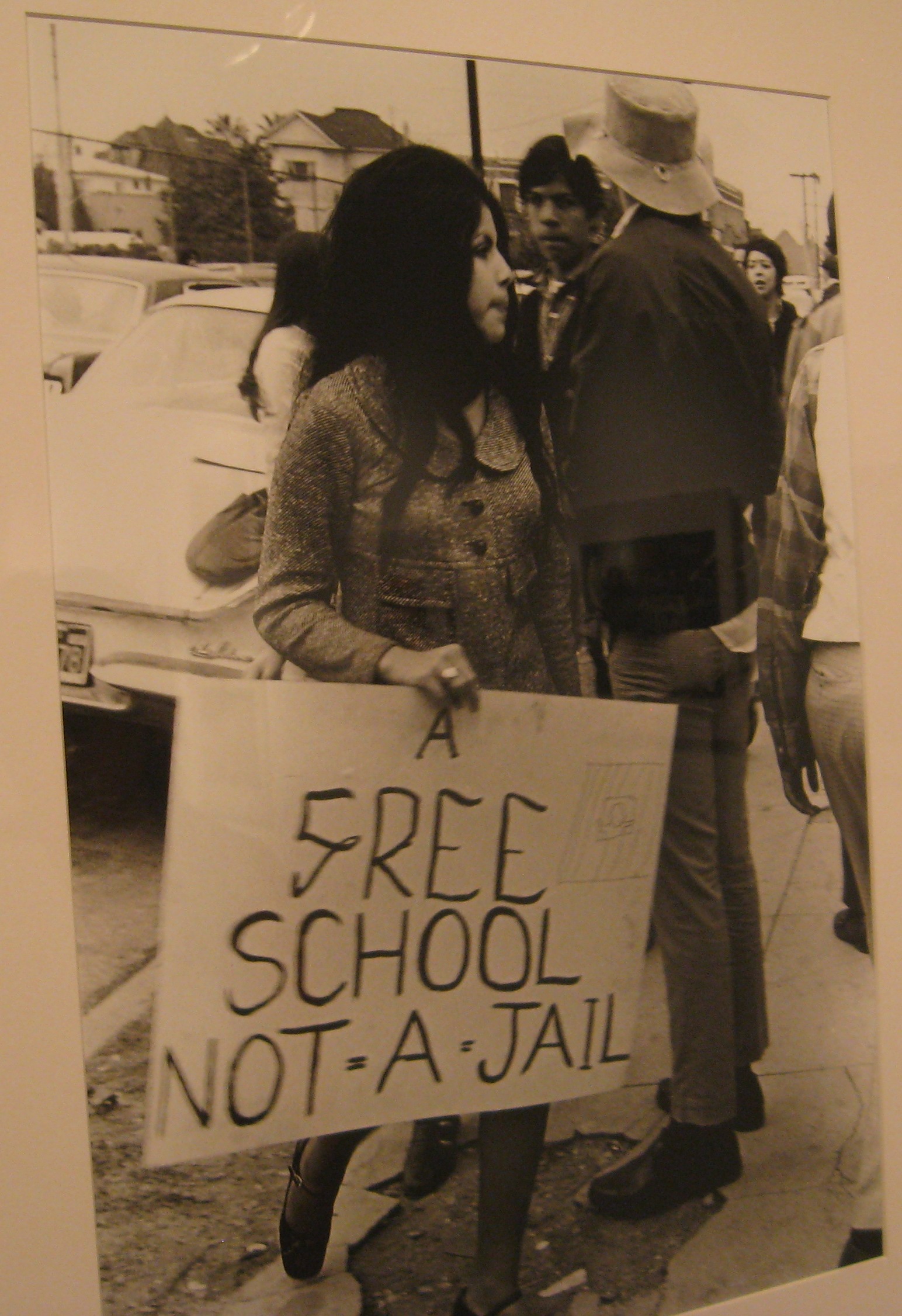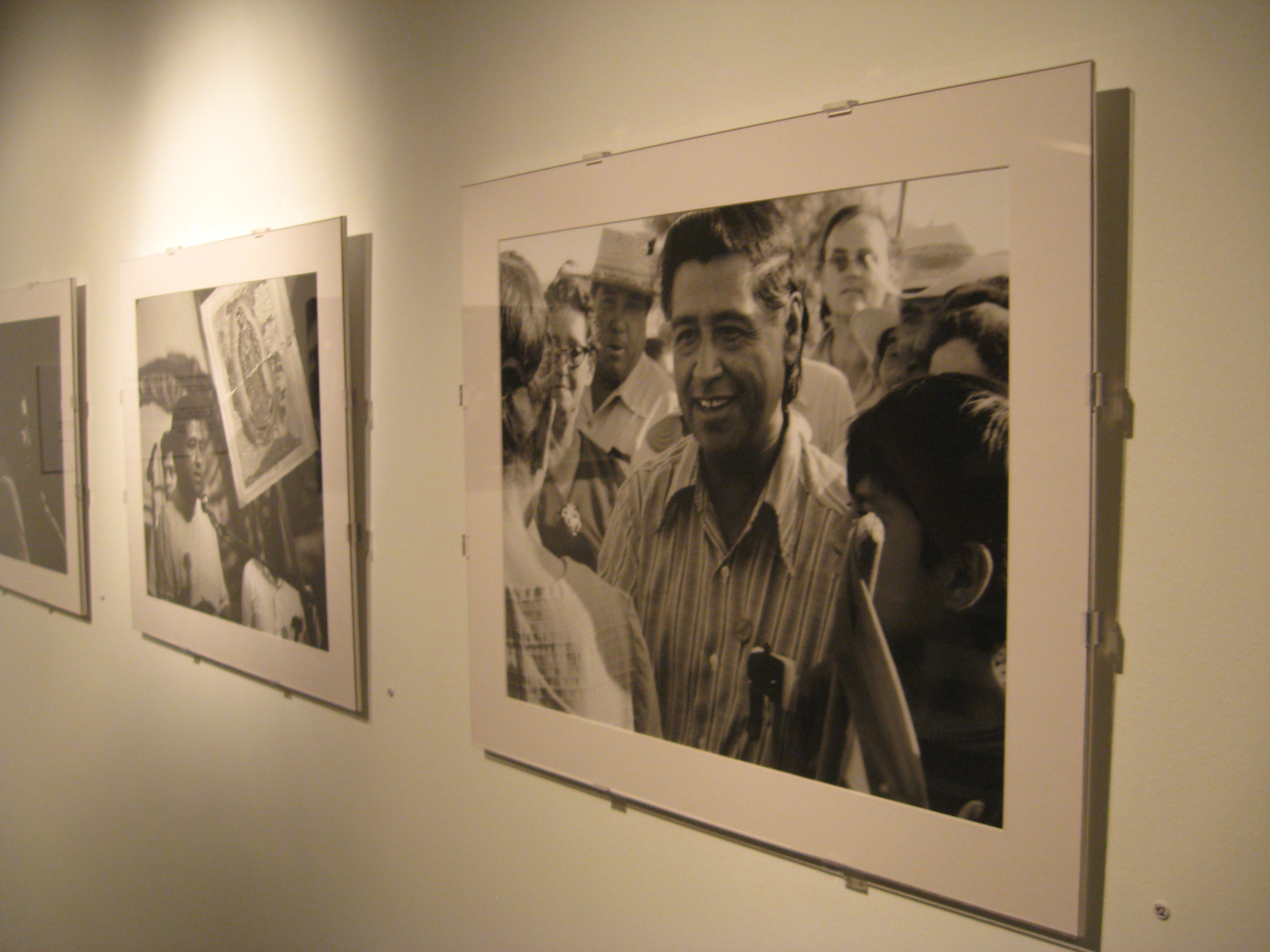This story can also be found on Neon Tommy as part of their “Classroom Frontlines” series.
 At first glance, 13-year-old Jasmine Taylor resembles the quintessential middle school student.
At first glance, 13-year-old Jasmine Taylor resembles the quintessential middle school student.
As she escorts a pair of captivated couples through the Hold Up Art Gallery on East 2nd Street, Taylor confidently discusses canvas choices, color schemes and photography. What distinguishes Taylor and her classmates from their peers is the way they will spend her free time this December – as docents for her class’s self-produced art collection displayed in downtown Los Angeles.
“Photography is my way of expressing myself,” Taylor said. “I like painting and all other types of art, but photography… it’s my life. But, I couldn’t do it without our Room 13.”
Taylor is one of 170 students involved in Room 13, a student managed and financed, multi-media studio at the James A. Foshay Learning Center in South L.A. One of only 83 similarly designed student-driven art studios worldwide, the Room 13 alternative classroom model focuses on original, creative learning and problem solving within a public school context, providing students with the necessary tools to become professional artists.
“Room 13 is the complete opposite of a LAUSD program or any traditional education program,” said John Midby, founder of Foshay’s Room 13 program. “It’s not a franchise, where they bring you the paperwork and you repeat the language and repeat after them. You come up with a system that fits within your school culture, where students and adults can create an art studio and business model.”
Teaching five classes daily to students from sixth grade through high school, Midby launched the first Room 13 program in North America three years ago, encouraging his students to both pursue personal expression through art and explore sustainable business models. When he’s not teaching, Midby is working overtime planning fundraising events, workshops and exhibitions during is conference periods and after school to help fund the self-sustaining studio.
“John [Midby’s Room 13] classroom really gives our students a chance to see how artists make a living and how to run a successful business,” said Foshay’s principal, Yvonne Edwards. “He is so committed, and his sense of commitment and expectations for his students have made them rise to the occasion.”
Founded in Fort Williams, Scotland in the early 90s, the Room 13 project is a facet of Art Studio International, which includes a network of innovative classrooms across Europe, India, South Africa and North America. Foshay’s Room 13 is one of three similar programs currently operating in Los Angeles.
Beginning his career as an independent filmmaker, Midby used substitute teaching to support his cinematic endeavors until becoming a full-time English teacher eight years ago. After helming a study on highly effective teaching methods, Midby was approached with the idea of starting a Room 13 classroom.
“It’s more like being a coach because the students can call the plays also,” Midby said. “I’m letting them know what the possibilities are, what Room 13 is, and then together, we figure out what we are doing day-to-day.”
To help guide students in their artistic discovery, Midby enlists the help of local artists and past Room 13 graduates to both inspire and mentor students. His students engage in virtually every conceivable artistic medium, from painting and stencils, to photography, video and even journalism.
The Room 13 model encourages each classroom to be self-sustaining and to be led by a student management team, responsible for decision-making and the implementation of the business model.
“The goal of the class is to support itself,” Midby said. “We do everything from appearing at farmer’s markets, to doing collaborative workshops and exhibitions. About 10 percent of the time, we have to do things like sell pizza… but for the most part, we’re putting on exhibitions and selling our art.”
 Midby and his students continue to lead a number of art workshops in South Los Angeles, teaching children and community members how to make recycled art and silkscreen original designs on T-shirts. In the classroom, Midby is part-teacher and part-producer, giving his students the agency halfway through the school year to plan their own class time. Midway through school year, Midby’s five classes are far beyond strict lesson plans.
Midby and his students continue to lead a number of art workshops in South Los Angeles, teaching children and community members how to make recycled art and silkscreen original designs on T-shirts. In the classroom, Midby is part-teacher and part-producer, giving his students the agency halfway through the school year to plan their own class time. Midway through school year, Midby’s five classes are far beyond strict lesson plans.
“One of the main things that I teach them is that the image is an idea, and the image and idea can come in any form,” Midby said. “It could have started off as a painting and it can end up as a sticker or a poster. But the design is forever.”
Although Foshay boasts comparatively high Academic Performance Index (API) score for the South L.A. area at 657, its scores remain under the L.A. Unified School District’s average of 709. The figure summarizes a school’s performance on the 2010 California State Standardized Testing and Reporting Program (STAR) and the 2010 California School Exit Examination (CAHSEE) tests.
As a whole, Midby believes the learning center model has worked for the surrounding community, allowing parents with both limited time and resources to ensure their children have the opportunity to attend a good public school. Operating much like a typical middle school, Foshay’s high school is smaller and more selective than the majority of those in L.A. Unified, giving priority to in-house graduates when applying to the high school.
“The neighborhood is kind of in flux… it’s really a Mecca for them in the neighborhood,” Edwards said. “There are a lot of houses, mostly single-family homes and very few apartments around the school. So you have people who are committed to their families.”
The demographic breakdown of the area surrounding Foshay is now more than 50 percent Latino, according to recent U.S. Census data. Despite renovations to the area and construction projects – such as the Metro Rail construction along Expedition Blvd. – the median value of homes in the area remains more than $150,000 less than that of the rest of California at $217,082.
Despite it’s location, Foshay is considered a more effective than average school, according to the Los Angeles Time’s “value-added” analysis. The analysis is a statistical method that estimates the effectiveness of a L.A. Unified teacher or school by looking at the standardized test scores of students.
Although skeptical of the recently published Los Angeles Times’ study on teachers’ performance in the classroom, he considers the project a necessary step in a tough economic climate.
 “Whether they publish this in the L.A. Times or not, every good teacher hates the fact that the union protects lousy teachers… hates it,” Midby said. “Why should the ones of us who work so hard have to see and work with other people who obviously don’t care?”
“Whether they publish this in the L.A. Times or not, every good teacher hates the fact that the union protects lousy teachers… hates it,” Midby said. “Why should the ones of us who work so hard have to see and work with other people who obviously don’t care?”
Midby said the system has lost a number of talented teachers whilst retaining some who, in his opinion, should have moved on to another profession.
“The problem has always been that [teacher’s] union [UTLA] has gone too far in protecting teachers,” Midby said. “Because of this, the district has had no viable way to separate bad teachers from good ones. When there are a bunch of cuts, it just increases the percentage of teachers who don’t really care about what they are doing.”
But Midby is not one of those teachers. In fact, he is quite the opposite.
Rogelio Santana, an 11th grader in Midby’s high school period of Room 13, considers Midby his most attentive teacher, as Midby constantly thinks about his students and encourages them to vehemently pursue what they are passionate about.
“He gave me the ride [to the exhibition] tonight. Without him, I probably wouldn’t have come,” Santana said. “He’s always trying to make me go to other places to learn more about art.”
A number of class’s pieces will continue to be shown until January 8 at the “Gift of Art” exhibition housed at the Hold Up Art Gallery. Presented in conjunction with the Los Angeles Museum of Contemporary Art (MOCA), the exhibition will feature art by Room 13 students alongside that of prominent L.A. artists, such as Bill Farroux, Chor Boogie, Ernesto Yerena, Kathia Dungplata, Magda Audifred, Mear One, Pep Williams, Philip Lumbang, Shark Toof, Steven Lopez and Timoi, the class’s artist-in-residence.
“The whole show is about the artists who helped influence these kids and their understanding of what contemporary art is,” said Brian Lee, founder of Hold Up Art Gallery. “Half the gallery’s profits from the show will go to support Room 13.”
For Midby, Foshay’s Room 13 artists represent the Los Angeles of today – young, expressive, multi-racial and creative.
“I just want them to see that you can do things even from the 6th grade that no one else can do and that other people are going to respect,” Midby said. “I tell my students, you can engineer your fate. You can pick what you want to do in your life, and you can accomplish it.”
To become a sponsor or for more information about ROOM 13 LA, please contact John Midby at [email protected] or 213-973-8349.
Intersections partnered with the Foshay Learning Center and Room 13 to host photography workshops. Watch slideshows of the workshops’ final products:
Students experiment with photography at Foshay Learning Center
Snapshots of the Foshay Learning Center
Behind the Lens: Photography at Foshay Learning Center










 In an effort to bring to the fore the artistic side of the Hub City, Compton artist Amanda Ferrell is organizing a local arts festival. Anyone above 16 years old can apply by emailing Ferrell at
In an effort to bring to the fore the artistic side of the Hub City, Compton artist Amanda Ferrell is organizing a local arts festival. Anyone above 16 years old can apply by emailing Ferrell at  A man in a cowboy hat sits alone on a bench beside Echo Park lake. The foreground is dark, and the man is shrouded in the shadow of a tree. He seems isolated, lonely. His face is lowered just slightly enough to suggest despair. His jacket and upturned collar are a strange juxtaposition against the sunshine of Los Angeles. Beyond the grassy verge lies infinite light – a world of burdening heat, to seek refuge from in the shade. Or perhaps a bright city, with new opportunities floating on the crest of every sparkling ripple and into the busy streets above.
A man in a cowboy hat sits alone on a bench beside Echo Park lake. The foreground is dark, and the man is shrouded in the shadow of a tree. He seems isolated, lonely. His face is lowered just slightly enough to suggest despair. His jacket and upturned collar are a strange juxtaposition against the sunshine of Los Angeles. Beyond the grassy verge lies infinite light – a world of burdening heat, to seek refuge from in the shade. Or perhaps a bright city, with new opportunities floating on the crest of every sparkling ripple and into the busy streets above. Castillo has been documenting Chicano society since he moved to Los Angeles with his family from El Paso, Texas when he was 16 years old. It was tumultuous time. The city’s demographics were shifting rapidly, and the Chicano Civil Rights Movement was erupting in an energetic rush. Castillo witnessed the "High School Blowouts" in 1968, snapping the pictures "Down with Brutality" and "A Free School Not-A-Jail" during a student protest at Roosevelt High School in Boyle Heights.
Castillo has been documenting Chicano society since he moved to Los Angeles with his family from El Paso, Texas when he was 16 years old. It was tumultuous time. The city’s demographics were shifting rapidly, and the Chicano Civil Rights Movement was erupting in an energetic rush. Castillo witnessed the "High School Blowouts" in 1968, snapping the pictures "Down with Brutality" and "A Free School Not-A-Jail" during a student protest at Roosevelt High School in Boyle Heights.  The images are naturally iconic, evocative of the sepia-toned sentiment that accompanies historical art work. But clustered together in the basement room of the Theatre Center building, Castillo’s work risks becoming reminiscent, rather than present. The exhibit is composed of faces and scenery now long familiar, and rests heavily on the symbolism of a revolutionary era, rather than seeking to break new ground. Among the powerful depictions, the simpler images stood out. The subtlely of a mother walking with a young child beside a graffited brick wall, or two young women, one holding a baby, waiting for a bus beside an extravagant mural, seemed more resonant than the rallies, speeches and politics.
The images are naturally iconic, evocative of the sepia-toned sentiment that accompanies historical art work. But clustered together in the basement room of the Theatre Center building, Castillo’s work risks becoming reminiscent, rather than present. The exhibit is composed of faces and scenery now long familiar, and rests heavily on the symbolism of a revolutionary era, rather than seeking to break new ground. Among the powerful depictions, the simpler images stood out. The subtlely of a mother walking with a young child beside a graffited brick wall, or two young women, one holding a baby, waiting for a bus beside an extravagant mural, seemed more resonant than the rallies, speeches and politics. .jpg) Later, an African-American man, dressed in multi-colored, tie-dye pants and a customized leather jacket, leaned in and adjusted his glasses to get a closer look at four similarly-clad Latino men inside one of the frames. "Los Four," taken in 1974, shows artist-friends of Castillo’s smiling happily beside their bright, spray-painted mural, designed to promote graffiti as art, not vandalism.
Later, an African-American man, dressed in multi-colored, tie-dye pants and a customized leather jacket, leaned in and adjusted his glasses to get a closer look at four similarly-clad Latino men inside one of the frames. "Los Four," taken in 1974, shows artist-friends of Castillo’s smiling happily beside their bright, spray-painted mural, designed to promote graffiti as art, not vandalism.





